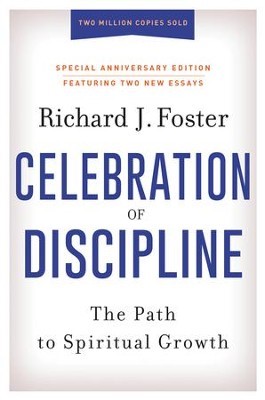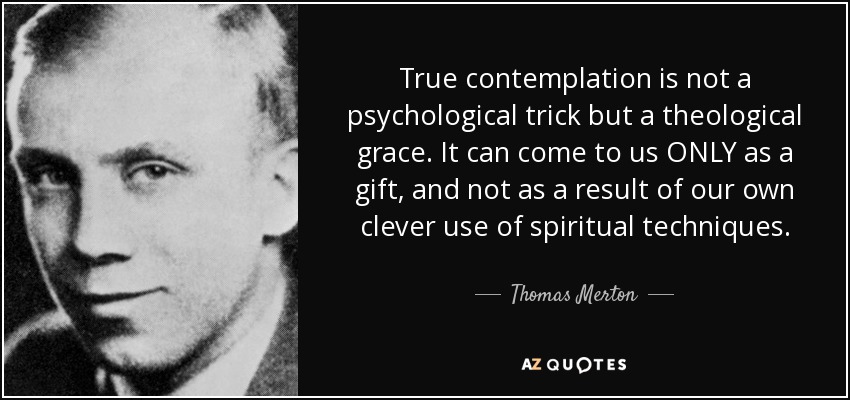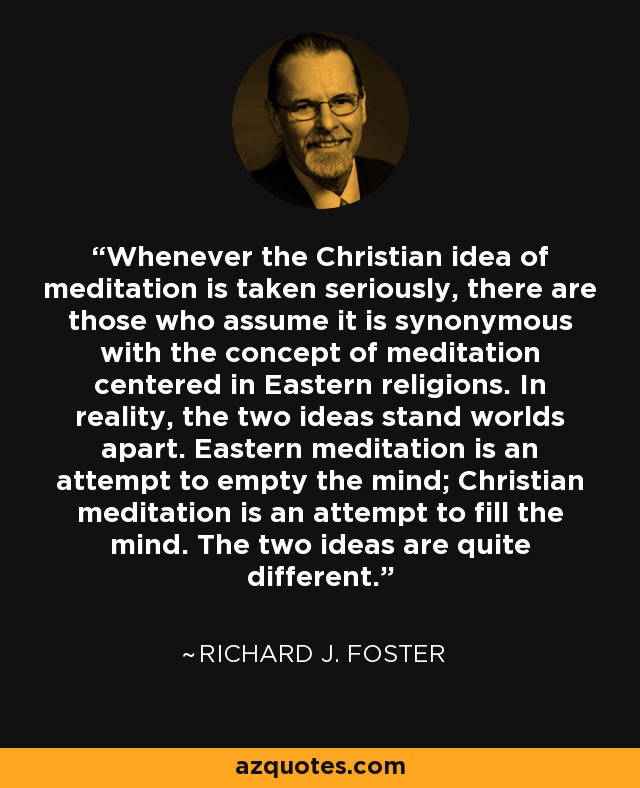Click here to return to Blog Post Intro

Christian meditation, very simply, is the ability to hear God’s voice and obey his word. It is that simple.
And Isaac went out to meditate in the field in the evening. – Genesis 24:63
God spoke to them not because they had special abilities, but because they were willing to listen.
The Bible uses two different Hebrew words (הָגָה and שׂיחַ) to convey the idea of meditation, and together they are used some fifty-eight times. These words have various meanings: listening to God’s word, reflecting on God’s works, rehearsing God’s deeds, ruminating on God’s law, and more.

It is this continual focus upon obedience and faithfulness that most clearly distinguishes Christian meditation from its Eastern and secular counterparts.
In Eastern meditation, there is no God to be attached to or to hear from. Detachment is the final goal of Eastern religion. In contrast, Christian meditation goes far beyond the notion of detachment. There is need for detachment—a “sabbath of contemplation” as Peter of Celles, a Benedictine monk of the twelfth century, put it.
Detachment is not enough; we must go on to attachment. The detachment from the confusion all around us is in order to have a richer attachment to God. Christian meditation leads us to the inner wholeness necessary to give ourselves to God freely.
Thomas Merton writes, “Meditation is really very simple and there is not much need of elaborate techniques to teach us how to go about it… Meditation has no point and no reality unless it is firmly rooted in life.”
St. Teresa of Ávila says, “. . . as I could not make reflection with my understanding, I contrived to picture Christ within me.” Many of us can identify with her words, for we too have tried a merely cerebral approach and found it too abstract, too detached.
Francis de Sales notes that “by means of the imagination we confine our mind within the mystery on which we meditate, that it may not ramble to and fro, just as we shut up a bird in a cage or tie a hawk by his leash so that he may rest on the hand.”
It is impossible to learn how to meditate from a book. We learn to meditate by meditating.
It is possible to practice meditation at any time and under almost every circumstance. Brother Lawrence in the seventeenth century and Thomas Kelly in the twentieth both bear eloquent testimony to this fact.
What about a place for meditation? Find a place that is quiet and free from interruption.
Contemplative prayer is a way of life.

With a touch of humor Peter of Celles notes that “he who snores in the night of vice cannot know the light of contemplation.”
For all the devotional masters the meditatio Scripturarum, the meditation upon Scripture, is the central reference point by which all other forms of meditation are kept in proper perspective. Whereas the study of Scripture centers on exegesis, the meditation of Scripture centers on internalizing and personalizing the passage.
Dietrich Bonhoeffer says, “. . . just as you do not analyze the words of someone you love, but accept them as they are said to you, accept the Word of Scripture and ponder it in your heart, as Mary did. That is all. That is meditation.” When Bonhoeffer founded the seminary at Finkenwalde, a one–half hour silent meditation upon Scripture was practiced by everyone.
Another form of meditation is what the contemplatives of the Middle Ages called “re-collection,” and what the Quakers have often called “centering down.” It is a time to become still, to enter into the recreating silence, to allow the fragmentation of our minds to become centered.
Another kind of contemplative prayer is meditation upon the creation.
Evelyn Underhill recommends, “. . . begin with that first form of contemplation which the old mystics sometimes called ‘the discovery of God in his creatures.’”
Thomas Merton writes that the person “. . . who has meditated on the Passion of Christ but has not meditated on the extermination camps of Dachau and Auschwitz has not yet fully entered into the experience of Christianity in our time.”
This form of meditation is best accomplished with the Bible in one hand and the newspaper in the other!

Meditation is not a single act, nor can it be completed the way one completes the building of a chair. It is a way of life. You will be constantly learning and growing as you plumb the inner depths.
May the Spiritual Discipline of Meditation serve you well, as you shoot for the stars!


